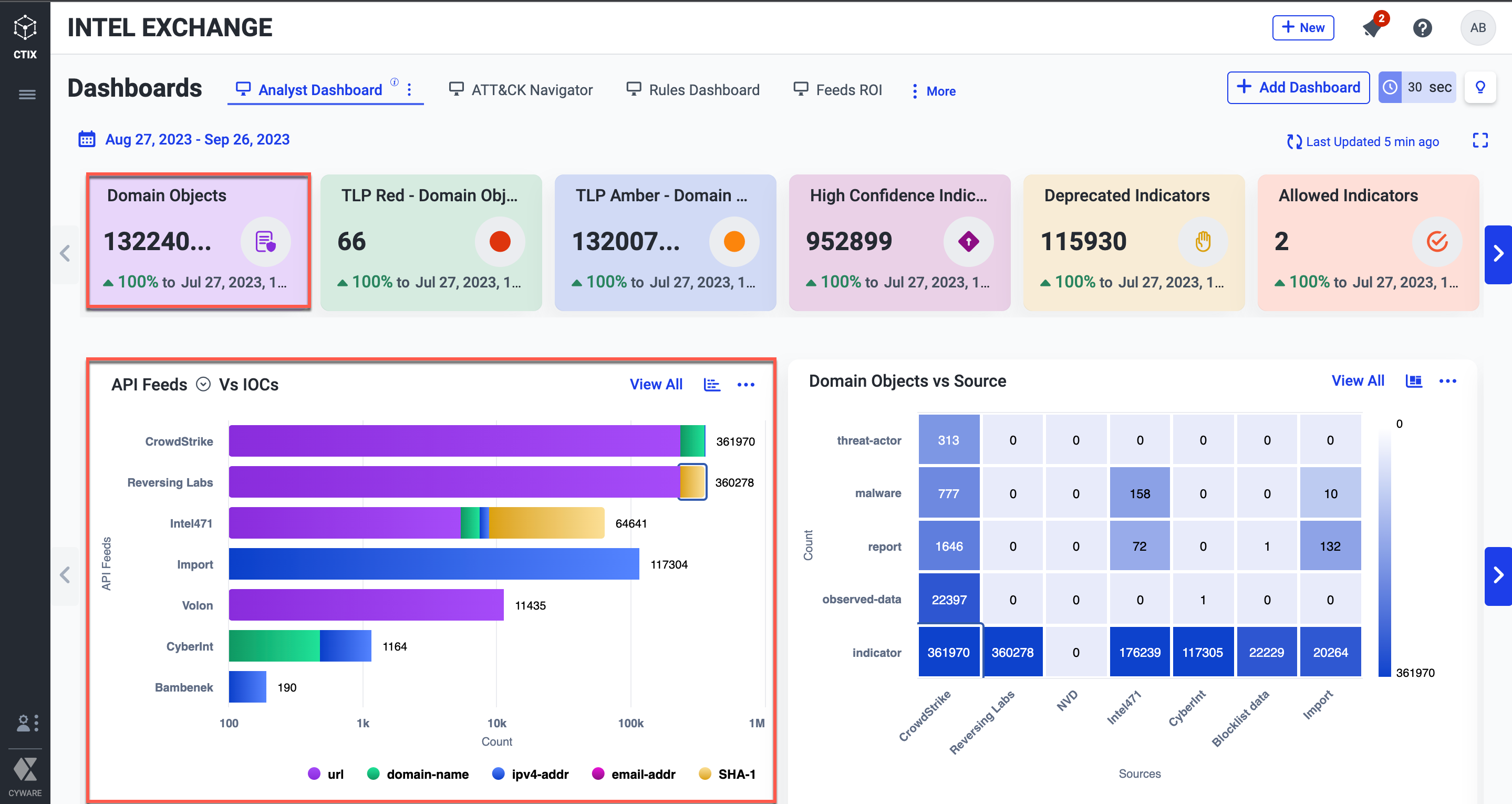Dashboards
Dashboards offer a concise and visual way to monitor the threat intelligence ingested in the platform in a meaningful manner. They are interactive, customizable, and help you visualize threat data to understand potential risks. The visual representation of threat intelligence helps security analysts to identify threat trends thereby enabling them to take preventive measures. You can gain a better understanding of the threats your organization faces.
Dashboards provide the following capabilities to monitor potential threats:
Gain real-time insights using a range of system and custom widgets and diverse layout options
Analyze data in-depth using interactive charts for a clearer understanding
Monitor extensive data volumes using a rotating dashboard enhancing real-time visibility and updates
Dashboards use predefined or custom time ranges based on which you can view current trends or historical data. By default, the dashboard displays data for the last 30 days. Intel Exchange dashboards comprise of summary and information widgets. For more information, see Widgets.

What are the various types of dashboards?
System Dashboards: Intel Exchange provides a range of predefined dashboards designed to showcase essential data for your organization. Intel Exchange provides the following predefined dashboards:
Analyst dashboard
Attack Navigator dashboard
Feeds ROI dashboard
Rules dashboard
For more information, see System Dashboards.
Custom Dashboards: Intel Exchange enables you to create personalized dashboards as per your requirements. You can create custom dashboards to monitor the updates relevant to your organization. For example, to monitor various custom entities, you can create a dashboard called Custom Entities that helps you monitor all out-of-the-box objects like vulnerabilities, threat actors, and more. For more information, Custom Dashboards.
Feature availability matrix
CTIX Enterprise | CTIX Lite | CTIX Spoke |
|---|---|---|
Yes | Yes | Yes |
Widgets
Widgets are the building blocks of a dashboard that consolidate the related data of one type and provide valuable information. A dashboard includes multiple widgets that are related to the use case of the dashboard.
Additionally, Intel Exchange empowers you to create custom widgets to accommodate your organization’s needs. You can create custom widgets using saved search queries, and use them to track and monitor potential threats.

What are the various types of widgets?
Summary Widgets: Summary widgets display information about a specific entity based on the time frame selected for the dashboard. For example, Domain Objects. For more information, see Summary Widgets.
Information Widgets: Information widgets display a comparison among two or more entities based on the time frame selected for the dashboard. You can view data in various layouts, such as graphs, pie charts, line charts, and more. For example, Feed Sources vs IOCs. For more information, see Information Widgets.